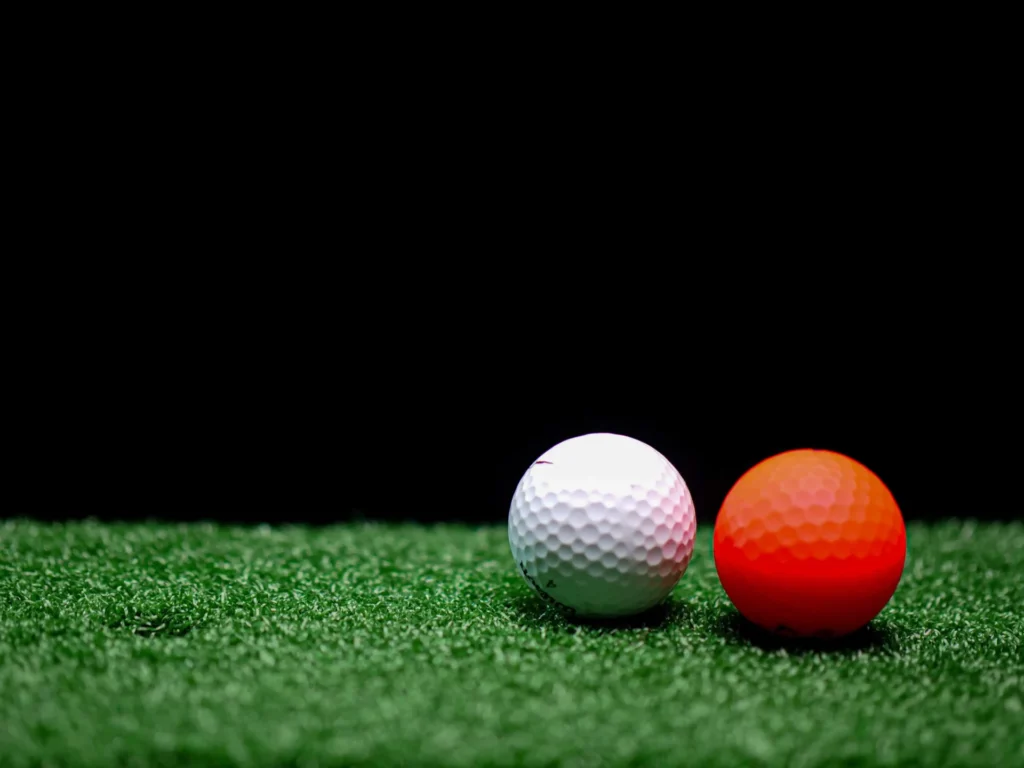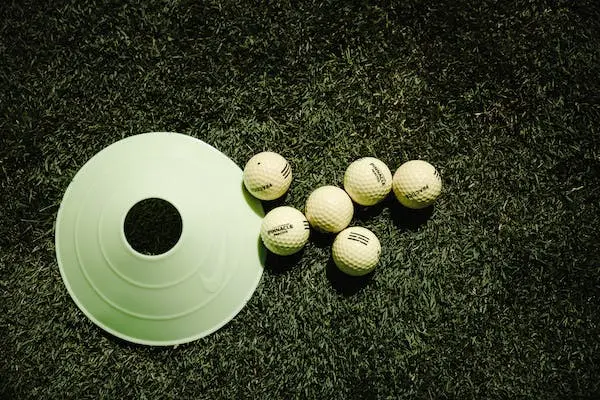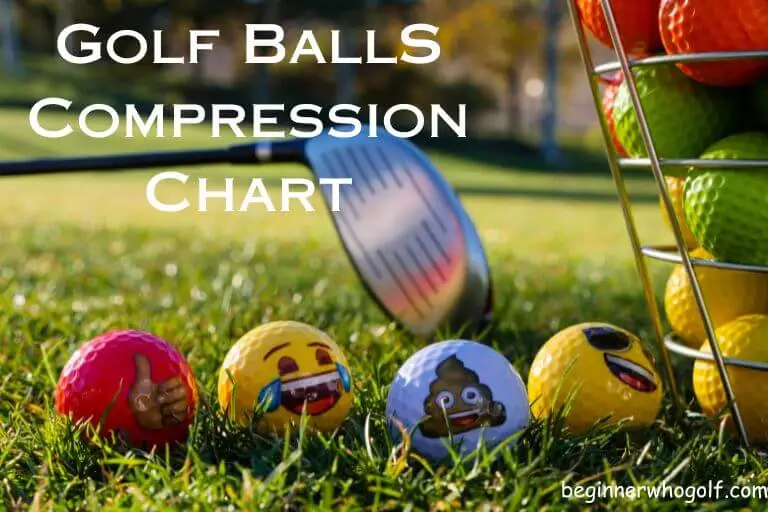Beginner’s Guide To Golf Ball Compression Chart 2024
Greetings, golf fans! Golf balls are an essential component of the proper equipment needed to become a pro. How can you pick the best option, though, with so many available? In this case, compression of the golf ball is necessary. In 2024, we’ll explain compression in detail and offer a beginner’s introduction to golf ball compression charts.
The correct golf ball can provide you an advantage on the green while playing golf, which also takes ability, accuracy, and a little bit of luck. Knowing compression is essential to raising your game, whether you’re a pro or just starting out. All the information you need about golf ball compression and how it affects your game is provided in the following paragraphs.
What is Golf Ball Compression
Golf ball compression, to put it simply, is the amount of force required to compress the golf ball when it is struck by a club head. A golf ball’s compression rating is calculated by observing how much its surface deforms after it is impacted.
A scale from 0 to 200 is typically used to quantify golf ball compression. The golf ball is softer and simpler to compress the lower the compression rating is. Higher compression ratings, on the other hand, denote stiffer golf balls that require more pressure to compress.
Golf Ball Compression Charts
Choosing the perfect golf ball can be a daunting task, but understanding compression ratings is key. Luckily, most golf ball manufacturers offer compression charts to make it easier for you to select the right ball for your game. So, if you’re looking to up your golf game, check out these popular golf ball compression charts of 2024.
Bridgestone
Golf balls with different compression ratings are available from Bridgestone, a reputable manufacturer. According to Bridgestone’s compression chart, their Tour B X ball has a 75 compression rating whereas their softest golf ball, the e6, has a 44 compression rating.
Bridgestone Golf Balls Compression Chart
| Golf Ball Model | Compression |
|---|---|
| Bridgestone e6 Soft | 44 |
| Bridgestone Tour B RX | 79 |
| Bridgestone Tour B RXS | 64 |
| Bridgestone Tour B X | 75 |
| Bridgestone Tour B XS | 75 |
Callaway
Callaway is another popular golf ball manufacturer that offers a variety of golf balls with different compression ratings, allowing you to find the ball that best suits your game. Callaway’s compression chart shows that their Supersoft ball has a compression rating of 38, which is extremely low and makes it ideal for golfers with slower swing speeds. On the other hand, their Chrome Soft X ball has a compression rating of 90, which is much higher and makes it suitable for golfers with faster swing speeds who are looking for more control and distance.
Callaway Golf Balls Compression Chart
| Golf Ball Model | Compression |
|---|---|
| Callaway Chrome Soft | 72 |
| Callaway Chrome Soft X | 95 |
| Callaway ERC Soft | 60 |
| Callaway Supersoft | 38 |
| Callaway Supersoft Max | 35 |
Cut
In order to assist you to discover the proper ball for your game, Cut, a relatively new golf ball manufacturer, offers a variety of golf balls with various compression ratings. The Blue ball from Cut has a compression rating of 60, which makes it a fantastic option for golfers who have slower swing speeds yet want greater distance. However, their Grey ball, which has a compression rating of 80, offers better control and is the best option for golfers who want to shape their strokes and have higher swing speeds.
Cut Golf Balls Compression Chart
| Golf Ball Model | Compression |
|---|---|
| Cut Blue | 90 |
| Cut Grey | 80 |
| Cut White | 75 |
| Cut Red | 60 |
Kirkland
The Kirkland brand is available in Costco locations, and if you’re a member, you may benefit from their competitive pricing. If you’re searching for a ball that offers extra distance off the tee, Kirkland’s Signature Performance Plus, which has a compression rating of 70, might be right for you. However, Kirkland’s Signature Three-Piece, which has a higher compression rating of 90, might be a better choice for you if you desire more control and accuracy. Which golf ball will help you play your best is ultimately up to you.
Kirkland Golf Balls Compression Chart
| Golf Ball Model | Compression |
|---|---|
| Kirkland Signature Three-Piece | 90 |
| Kirkland Signature Performance Plus | 70 |
Mizuno
The Japanese company Mizuno makes golf equipment and provides a variety of golf balls with various compression ratings. The RB566 ball from Mizuno has a compression value of 66, whereas the RB Tour X ball has a compression rating of 95, as shown on the company’s compression chart.
Mizuno Golf Balls Compression Chart
| Golf Ball Model | Compression |
|---|---|
| Mizuno RB Tour | 85 |
| Mizuno RB Tour X | 95 |
| Mizuno RB 566 | 66 |
| Mizuno RB 566V | 91 |
Snell
Snell is a company to take into consideration if you’re seeking more modern and well-liked golf ball selections. The MTB-X ball has a compression value of 96 according to Snell’s compression table, while the Get Sum ball has a compression rating of 65.
Snell Golf Balls Compression Chart
| Golf Ball Model | Compression |
|---|---|
| Snell MTB Black | 75 |
| Snell MTB-X | 96 |
| Snell Get Sum | 65 |
| Snell My Tour Ball | 75 |
| Snell Red | 50 |
Srixon
A reputable golf ball manufacturer, Srixon, offers a selection of balls with various compression ratings. In contrast to their Z-Star XV ball, which has a compression value of 102, Srixon’s Soft Feel ball has a compression rating of 60.
Srixon Golf Balls Compression Chart
| Golf Ball Model | Compression |
|---|---|
| Srixon Z-Star | 90 |
| Srixon Z-Star XV | 102 |
| Srixon Q-Star Tour | 67 |
| Srixon Q-Star | 72 |
| Srixon Soft Feel | 60 |
TaylorMade
Popular golf equipment producer TaylorMade provides a selection of golf balls with various compression ratings. According to TaylorMade’s compression chart, their TP5x ball has a compression rating of 97, whereas their Soft Response ball has a number of 50.
TaylorMade Golf Balls Compression Chart
| Golf Ball Model | Compression |
|---|---|
| TaylorMade TP5 | 83 |
| TaylorMade TP5x | 97 |
| TaylorMade Project (a) | 70 |
| TaylorMade Project (s) | 60 |
| TaylorMade Distance+ | 77 |
| TaylorMade Soft Response | 50 |
Titleist
One of the most reputable golf ball manufacturers in the world is Titleist. The DT TruSoft ball from Titleist has a compression value of 40 whereas the Pro V1x ball has a compression rating of 100, according to the company’s chart.
Titleist Golf Balls Compression Chart
| Golf Ball Model | Compression |
|---|---|
| Pro V1 | 90 |
| Pro V1x | 100 |
| AVX | 77 |
| Tour Speed | 82 |
| DT TruSoft ball | 40 |
The Best Compression Golf Ball For Every Swing Speed
Let’s examine which golf ball compression rating is ideal for various swing speeds now that we’ve looked at some of the most well-liked golf ball compression charts for 2024.

Under 80 MPH
You might think about utilizing a golf ball with a compression rating of 40–60 if your swing speed is less than 80 MPH. These softer golf balls will collapse more readily, allowing you to hit the ball farther and faster.
The Bridgestone e6, Callaway Supersoft, Titleist DT TruSoft, and Wilson DUO Soft+ are some of the top golf balls for novice players with swing speeds under 80 MPH.
Between 80 and 90 MPH
A golf ball with a compression rating of 60-80 should be used if your swing speed is between 80 and 90 MPH. These golf balls offer an excellent compromise between distance and control.
The Bridgestone Tour B RX, Callaway Chrome Soft, Mizuno JPX, and Srixon Soft Feel are a few of the top golf balls for players with swing speeds between 80 and 90 MPH.
Between 90 and 100 MPH
A golf ball with a compression rating of 80 to 90 should be used if your swing speed is between 90 and 100 MPH. These golf balls also offer an excellent compromise between distance and control.
The Callaway Chrome Soft X, Kirkland Performance+, Snell MTB-X, and Trust Control are a few of the top golf balls for players with swing speeds between 90 and 100 MPH.
Between 100 and 110 MPH
A golf ball with a compression rating of 90-100 should be used if your swing speed is between 100 and 110 MPH. These more controllable, harder golf balls are better suited to faster swing speeds and offer greater control.
The Bridgestone Tour B X, Mizuno RB Tour, TaylorMade TP5x, and Titleist Pro V1 are a few of the top golf balls for players with swing speeds between 100 and 110 MPH.
Over 110 MPH
You should think about utilizing a golf ball with a compression rating of above 100 if your swing speed exceeds 110 MPH. These golf balls offer the most control and are ideal for fast swing rates.
Golf balls like the Volvik S4, Srixon Z-Star XV, Titleist Pro V1x, and Bridgestone Tour B XS are some of the top choices for players with swing velocities of more than 110 mph.
What Golf Ball Features Effect Compression
Compression rating is a crucial consideration when selecting a golf ball, but it’s not the only one. Other golf ball characteristics that may impact compression include the following:

Golf Ball Layers
The core, mantle, and cover are the three layers that make up the majority of golf balls. The innermost layer, known as the core, is often constructed of rubber or synthetic materials. The middle layer, the mantle, offers more spin and control. The cover, which is the top layer, may be constructed from a variety of materials, including urethane or Surlyn.
The golf ball’s compression can vary depending on the material and layer count. The compression ratings of golf balls with more layers and softer coverings will often be lower.
Core
The golf ball’s core plays the most role in determining compression. More distance will be available from a larger core with a greater compression rating, but less spin and control. Less distance will be offered, but more spin and control will be offered by a smaller core with a lower compression rating.
Cover
The compression of the golf ball can also be impacted by its cover. A softer cover will compress more readily, enhancing ball velocity and range. A softer cover, nevertheless, can also be more vulnerable to scuffs and scratches.
What External Factors Affect Golf Ball Compression
Compression can be impacted by outside variables in addition to golf ball characteristics. Here are a few outside variables to think about:

Weather Conditions
Golf ball compression can be impacted by temperature and humidity. Golf balls become less elastic and may compress less in cooler climates. Golf balls may compress more when the temperature rises because they become more elastic.
Altitude
The compression of golf balls can be impacted by altitude. Golf balls can travel further because the air is less thick at higher altitudes. Golf balls may compress less, though, due to the lower air pressure.
Frequently Asked Questions (FAQs)
Q: What is the compression rating of a golf ball?
A: A golf ball’s compression rating is a gauge for how much the ball contracts when hit by a club. Lower numbers indicate softer golf balls, whereas higher numbers indicate harder golf balls. Compression values typically vary from 0 to 200.
Q: What is the best compression rating for a golf ball?
A: Your swing speed will determine which golf ball has the best compression rating. Golfers who swing the club more slowly should use softer balls with lower compression ratings, while those who swing the club more quickly should use harder balls with higher compression ratings.
Q: Can a golf ball’s compression rating change over time?
A: Yes, wear and tear, exposure to heat and moisture, as well as time itself, can cause a golf ball’s compression rating to vary.
Q: Should I always use the same golf ball?
A: Keeping your game consistent can be achieved by consistently using the same golf ball. However, if you’re a novice or a golfer with a high handicap, you shouldn’t always utilize the same golf ball.
Q: What is the difference between a low-compression golf ball and a high-compression golf ball?
A: High-compression golf balls are stiffer and compress less when struck than low-compression balls, which are softer and compress more readily. Golfers with slower swing speeds are often better off with low-compression balls, while those with faster swing speeds should use high-compression balls.
Conclusion
Your game may be significantly impacted by selecting the proper compression rating for your golf balls. You may pick the golf ball that best meets your demands by taking into account aspects like your swing speed, amount of experience, and desired distance. There is a compression rating out there that is ideal for you, regardless of whether you want a harder, more controlled golf ball or a softer, more forgiving golf ball.
But keep in mind that buying a golf ball involves more considerations than just compression rating. You can learn more about some other factors by consulting a guide written by tgw (Sweetest Spot in Golf). Compression can also be influenced by additional elements, including the number of layers and materials employed, as well as by outside elements like weather and altitude. You may improve your performance on the course and have a more enjoyable golfing experience by selecting a golf ball with care.






